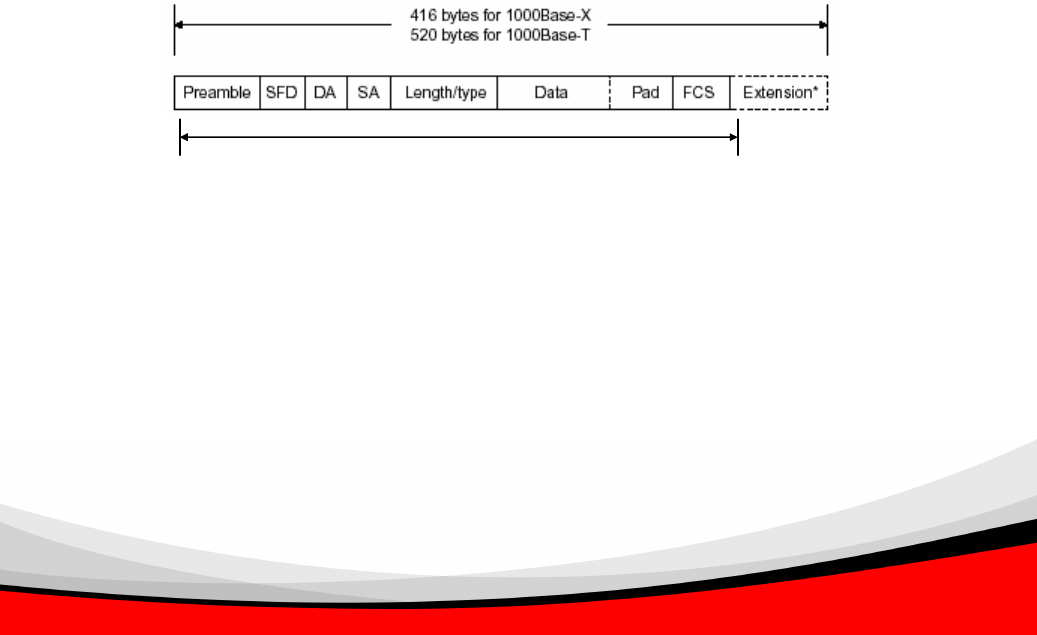
29
Ethernet MAC transmits frames in half-duplex and full-duplex ways. In half-
duplex operation mode, the MAC can either transmit or receive frame at a moment,
but cannot do both jobs at the same time.
As the transmission of a MAC frame with half-duplex operation exists only in
the same collision domain. The carrier signal needs to spend time to travel and
reach the target device. The worst case occurs when two most-distanced devices in
the same collision domain; one sends the frame first and the other sends the frame
right before the frame from first device arrives. The collision happens and will be
detected by the second device immediately. Because of the medium delay, this
corrupted signal needs to spend some time to propagate back to the first device.
The maximum time to detect a collision is approximately twice the signal
propagation time between the two most-distant devices. This maximum time is
traded-off by the collision recovery time and the diameter of the LAN.
In the original 802.3 specification, Ethernet operates in half duplex only.
Under this condition, when in 10Mbps LAN, it’s 2500 meters, in 100Mbps LAN, it’s
approximately 200 meters and in 1000Mbps, 200 meters. Theoretically, the LAN
diameter should be 20 meters. However, in practice the LAN diameter of 200
meters is kept by increasing the minimum frame size with a variable-length, non-
data extension bit field, which is removed by the receiving MAC. The following
tables are the frame format suitable for 10M, 100M and 1000M Ethernet, and some
parameters that shall be applied to all of these three types of Ethernet.
Actually, the Gigabit Ethernet chips in practice do not support this feature at
the moment. All chips, and as well as all network vendors' devices, support full-
duplex mode only. It is safe to say that this criterion does not exist for both present
time and in the future. The switch’s Gigabit module supports only full-duplex mode.
Fig. 3-4 Gigabit Ethernet Frame
64 bytes


















